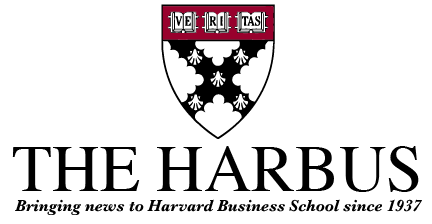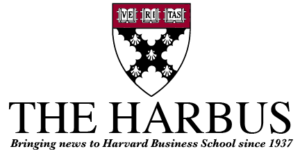As our motley group of four representing Japan, Russia, the United States (U.S. citizens require special permission to visit Cuba for educational/cultural travel) and India descended upon Havana, the air was rife with a spirit of adventure and mystique. Whilst we waited in line for immigration, we were hesitant to get our passports tainted with the much dreaded Cuban entry stamp.
However, to our surprise and delight, the immigration officer simply evaded that procedure, while we waited silently. We then proceeded to the exchange bureau to decipher the dual currency system in Cuba and were amazed to learn that one dollar yielded .8 CUC (Cuban Convertible Peso) breitling superocean replica. Indeed, Cuba’s “tourist” currency was stronger than the US dollar, given the similar purchasing power parity of the CUC for most tourist essentials such as water, food, museum entry fees, car rentals, etc. The local currency, the Cuban national peso converted at 24 to one CUC but its usage was limited to local spots and markets, largely outside the purview of tourists. Movie tickets cost two national pesos while tickets to the Cuban National Ballet (of international standards) were five pesos for locals, compared to 20 CUC for tourists. Needless to say, the locals were trying to earn as much money from tourists in CUC, while simultaneously trying to avoid reporting this income to the government to combat the bitter poverty and lack of resources they confronted.
The existence of this parallel economy became more evident as our trip continued tag heuer replica for sale . The taxi drivers largely drove us without turning on their meters since the state claimed 99% of their metered revenues. However, the state laws were enforced very strictly, resulting in taxi drivers avoiding tourist junctions or areas that were heavily monitored by the police, if their taxi meters were off. Another example of the ingenuity of the Cubans was the Casa Particulares. Essentially, a cheaper option to hotels, these are homes of Cuban families who host tourists and provide for terrific insight into the lives of the locals. Our host families were very warm and hospitable and their homes were well-furnished and clean. The state requires the family to pay a monthly fee of 250 CUC, and the rooms are rented out at an average of 30 CUC/night, making it hard to break even given the seasonality of tourists. To increase their revenues, the families offered meals and drinks that were priced relatively high, but escaped scrutiny by the state, thereby making it a feasible business option.
The grim reality of the Cubans was illustrated by the absolute dilapidation of Havana, the capital city. In its prime, the city must have been the crown jewel of the Spanish empire, abounding with beautiful buildings, churches, forts and such. Remnants of great architecture across Havana inspired awe and marvel, but the lack of maintenance and negligence by the authorities was shocking! Most of the city (save the expat localities/consulate office areas and certain squares/streets targeting tourists) was in shambles, the exteriors unpainted, the infrastructure decrepit and wasting away. Also disheartening were the long lines we saw at state-subsidized eateries. Specifically, Cuba’s most popular ice-cream parlor, Coppelia had the locals queuing for up to 4 hours. A side-entrance provided instant access to the counter but cost 1.5 CUC, which was evidently unaffordable for the masses!
What further aggravated me was the abundance of propaganda on the streets of Cuba. It was the 50th anniversary of the revolution, and quotes by Fidel and Che appeared at every corner. Most memorable amongst those were, “History will absolve me”, “Everything for the revolution”, “Homeland or death”, “To have more you have to do more” and “We shall overcome.” This lettering was sometimes accompanied by pictures of the two leaders, dressed in military regalia, or the Cuban flag and clearly demonstrated a sincere effort at building strong nationalistic sentiment by the government. Some towns even had pictures of Hugo Chavez shaking hands with Fidel, demonstrating the strong alliance between the two leaders. We engaged in dialogue with several Cubans across various demographics, but the closest we came to hearing negative backlash against the regime was a comment by a security guard who said, “Fidel had good intentions, but they did not work out as planned.” It was infuriating to witness this juxtaposition of rampant poverty and blind faith.
Is all of Cuba dismal and glum? No, one can indulge in a perfect mojito at the Hotel Nacional in Havana, escape to the stunning beaches in Varadero or Caya Coco, hike in the valleys of Viñales, swim in natural caves and waterfalls in Trinidad or simply soak in the wonderful music that permeates the country. However, no matter where we went, I found it impossible to disconnect from the harsh everyday reality of life in Cuba. On our last night in Havana, we went to La Guarida, a restaurant that Lonely Planet describes as ‘unmissable and unbeatable’, located on the third floor of an aged apartment building. A winding stairway (stunning, but ignored) led us through the dismal building to a discreet wooden door that opened into a gorgeous eatery, which served terrific food at New York prices! As my friend and I sipped strong Cuban coffee on the balcony overlooking impoverished surroundings, the contradiction was baffling and disturbing; we wondered what recourse do 11 million Cubans have? How, when and by whom will they be led out of this misery? Is there a silver lining to this dark cloud?
Hope, alas, is not the prerogative of the rich; it transcends borders, regimes and embargos and resides at the core of Cuba, tangible and alive. Much like the rest of the world, the Cubans too have the audacity to hope and are awaiting the opening up of Cuba to American tourists and commerce. Under Bush, Cuban-Americans were allowed to visit their immediate families in Cuba once every 3 years and send home up to $300 every quarter. The Obama administration has allowed family members to visit once a year. Moreover, a recent bill (yet to be passed) advocates free travel by Americans to Cuba, clearly indicating attempts, albeit feeble, by the current policy makers to reach out. Will Obama succeed at convincing the many opponents of the bill? If so, will Cuba reciprocate to an appeal for dialogue and exchange under the current Castro regime? Will Cubans ever be able to break the shackles of Communism and integrate with the global economy www.replicabestsale.co.uk? As my favorite quote by Che Guevara suggests, “Let’s be realists; let’s dream the impossible.”
AUTHOR’S BIOGRAPHY
Vibha Kagzi is a self-confessed travel junkie. A native of Bombay, India, she is pursuing her MBA at HBS and is an alumnus of Carnegie Mellon University.

